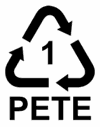There are many ways to make water safe for drinking. One method that’s starting to gain acceptance in tropical countries is solar water disinfection, or SODIS, because it is simple, practically free and uses low-tech, easy-to-find materials. The World Health Organisation, UNICEF, and the Red Cross recommend the SODIS method for treating drinking water in developing countries.

How to apply the SODIS method to make safe drinking water
The process uses sunlight to disinfect water stored in common PET bottles which are used for soft-drinks. It works because sunlight contains radiation that kills pathogens including bacteria, viruses and parasites that cause diarrhea.
-
Collect some colorless, transparent PET soft-drink bottles that will contain no more than 2 liters of liquid. Choose bottles that have few surface scratches and blemishes. Remove any labels and wash well with clean water. Sunlight may not penetrate the water adequately if the bottles are too large or heavily scratched.
-
Fill the bottle three-quarters full with the water to be disinfected, screw on the cap and shake well for 20 seconds. After shaking, fill the bottle with more water but leave a space at the top for air, then screw on the lid once again. This step oxygenates the water which helps speed up the disinfection process.
-
Expose the bottle to sunlight. A good place is on a sloped surface facing the sun, like a corrugated iron sheet roof. The length of exposure depends on your weather conditions.
-
Once treated, the water should be stored in and consumed directly from the bottles to avoid re-contaminating the water.
| Weather conditions | Minimum exposure duration |
|---|---|
| Sunny (less than 50% cloud cover) | 6 hours |
| Cloudy (50-100% cloudy, with little or no rain) | 2 days |
| Continuous rainfall | The SODIS method cannot be reliably used to disinfect water |
Important considerations
- The SODIS method kills pathogens in the water but does not remove toxic chemicals.
- Turbid (cloudy) water must first be filtered to remove the particles before being used to fill bottles.
- Old bottles that are scratched or discolored should be replaced.
- PET or PETE (polyethylene terephthalate) bottles should be used. The easiest way to find out if a bottle is made out of PET is to look for the recycling mark shown below. 1 is the resin identification code for PETE or PET.
 PET resin identification code stamp
PET resin identification code stamp

This is one reason the water left in a hot car is potable.
1. I’ve always been wary of water kept in plastic bottles (remember the hormone-disrupting chemical bisphenol-A (BPA) found in polycarbonate bottles?). Much more so for water kept in bottles that have been exposed to heat, sunlight and UV rays. We’re not sure of what chemicals leach out of the plastic under such conditions.
2. I would rather use clear glass bottles (“long neck” or “lapad” gin bottles are perfect examples.
3. Even then, I would try my best to pre-filter the water (yes even rain water – given Metro Manila’s toxic chemical laden athmosphere) before they go through the SODIS process. I would use several clean (preferably white cotton cloth or paper towels clothes or hankies should be okay but these should not be treated with fabric softeners and be thoroughly rinsed). Soap, detergents, optical enhancers and fabric softeners only add to the chemical load.